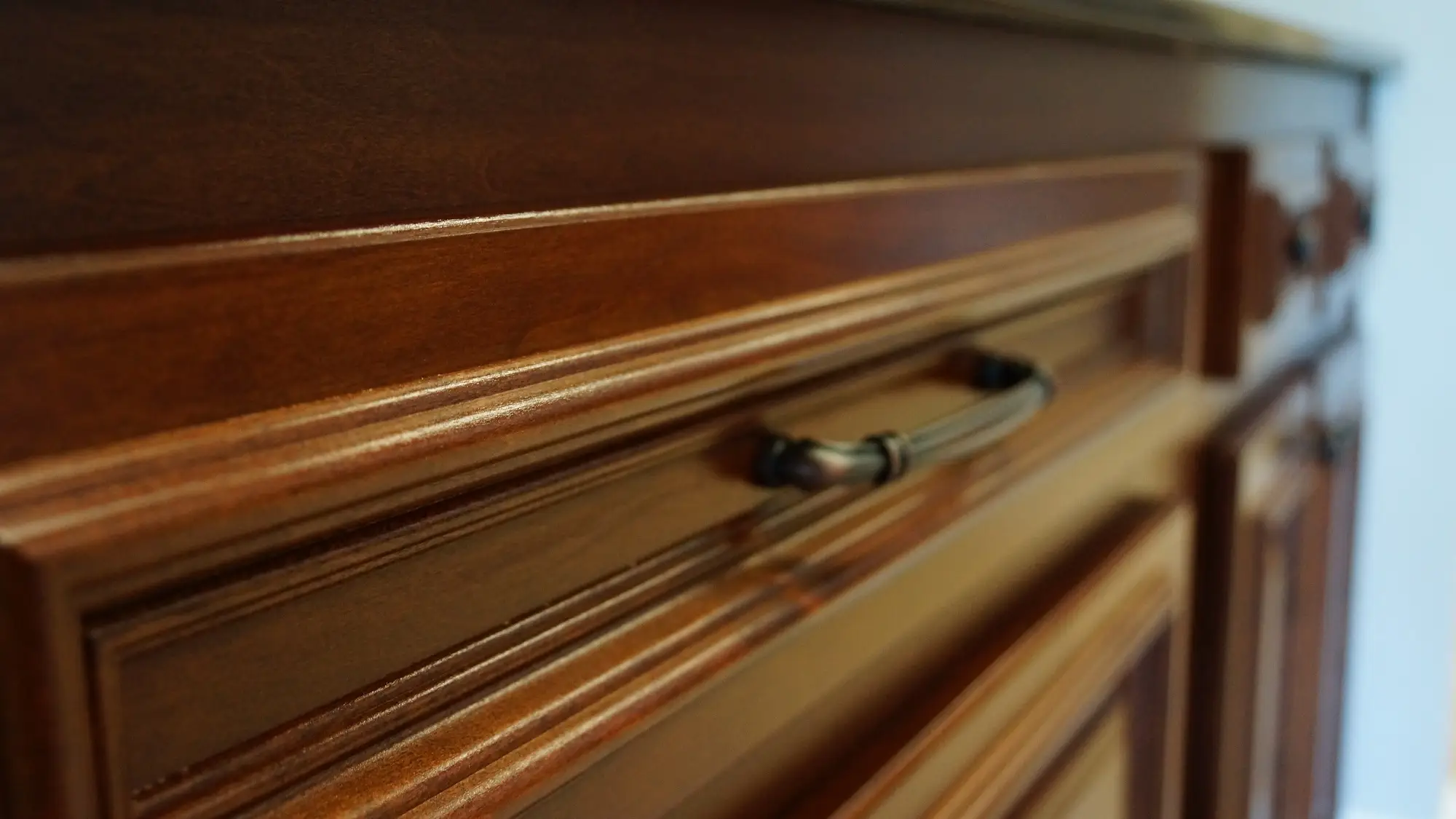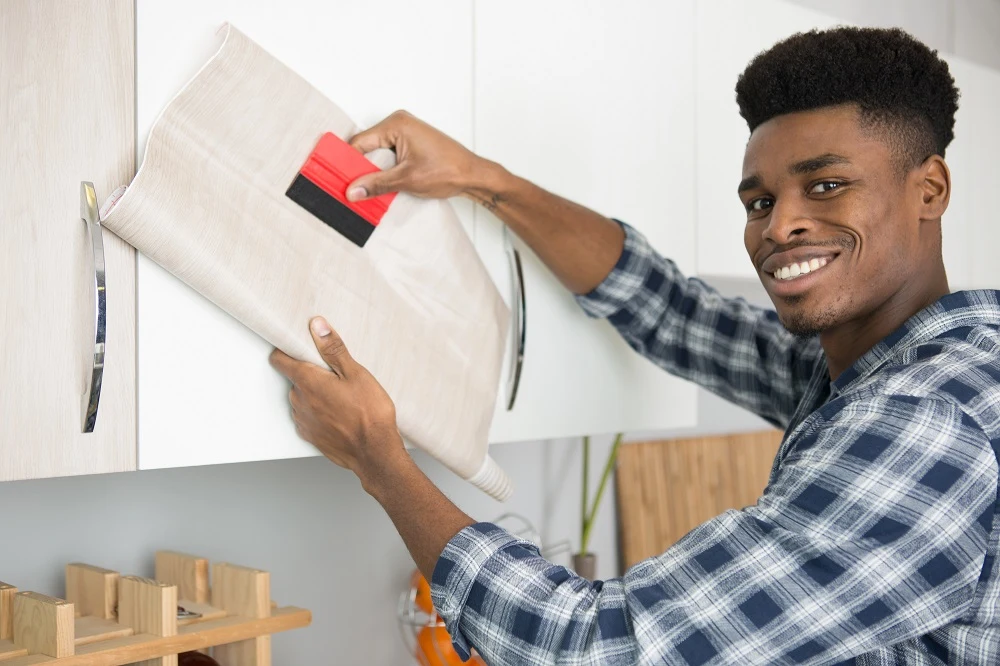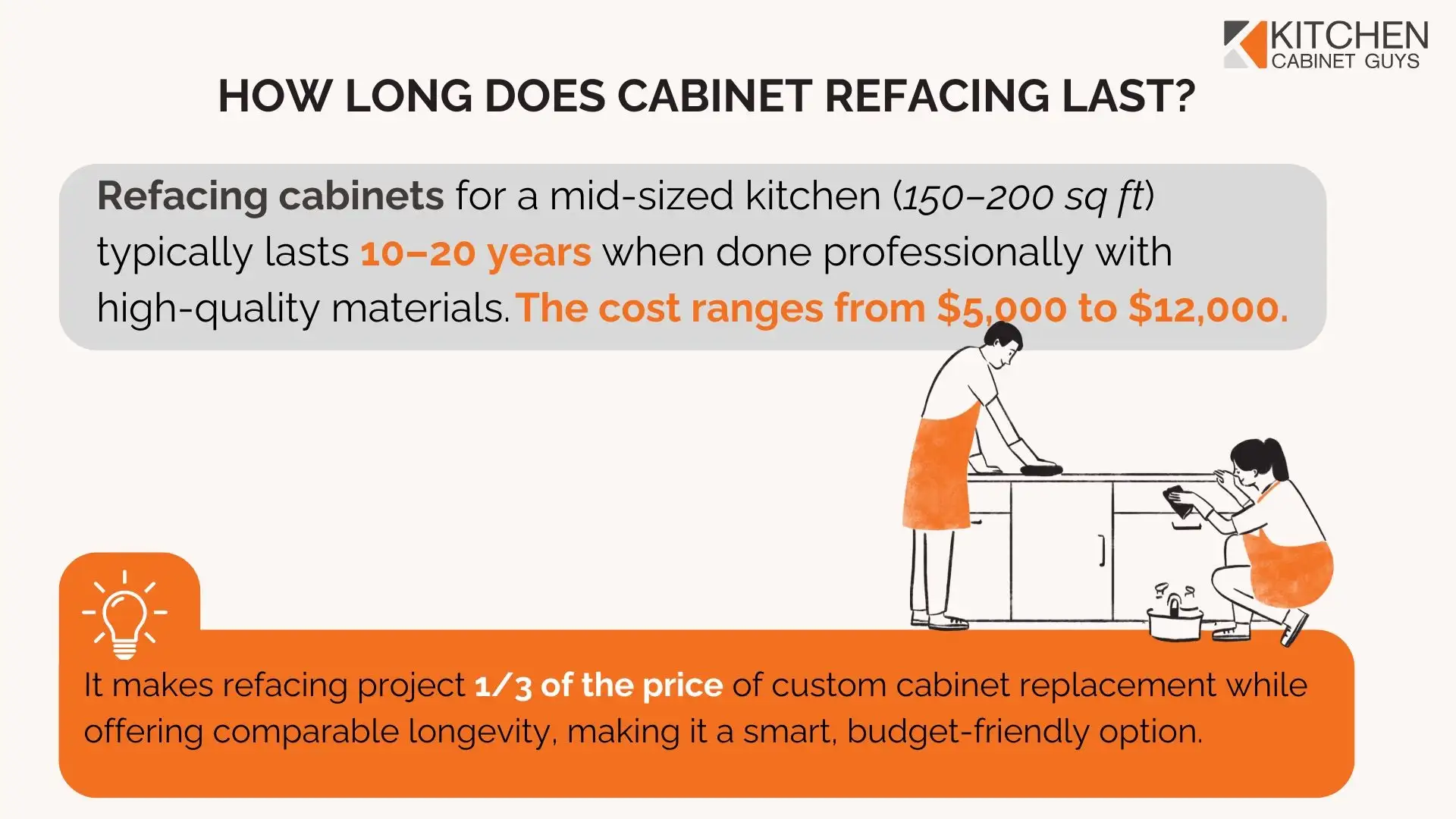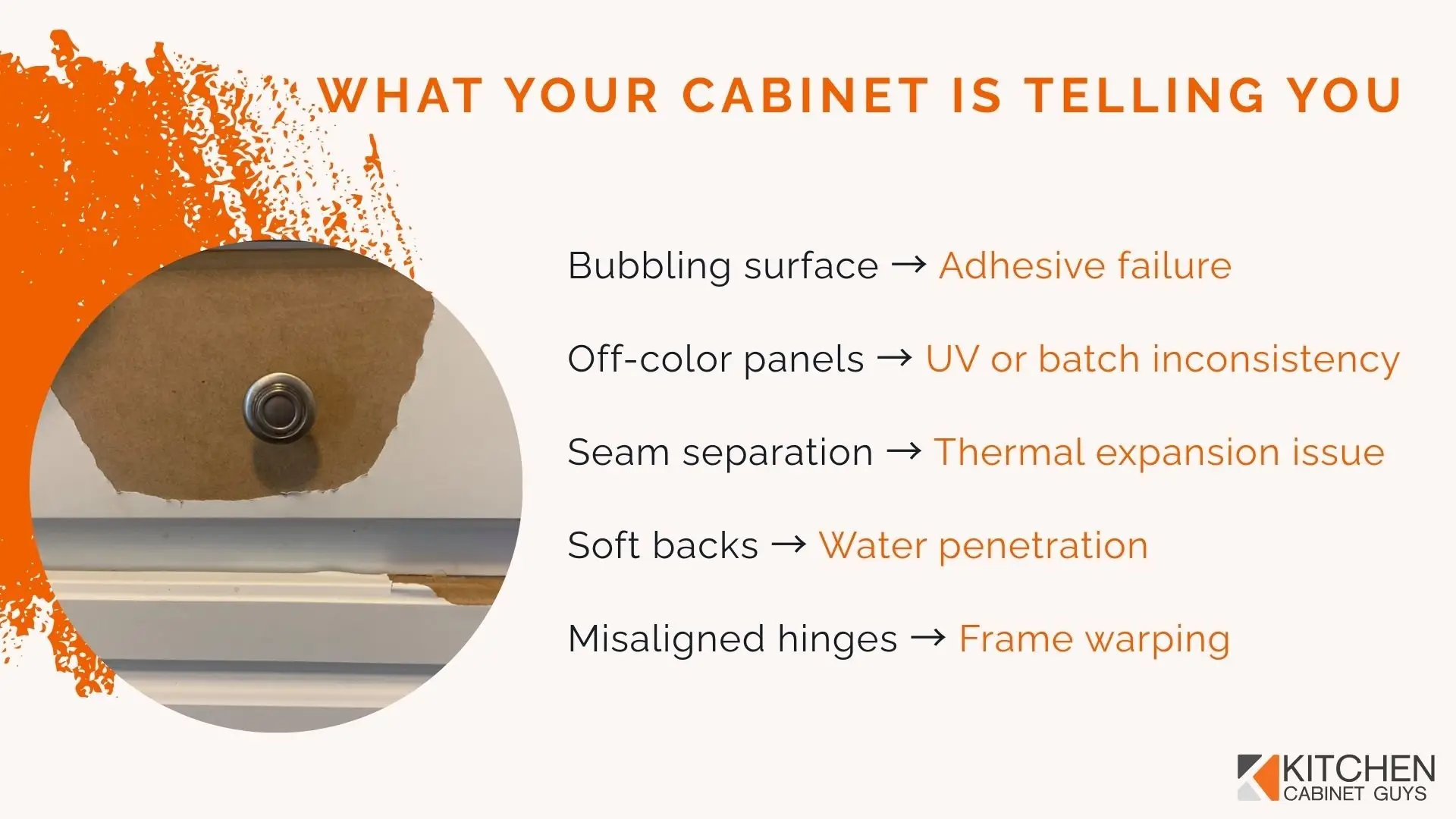
The Ultimate Guide to Kitchen Cabinet Finishes: Matte, Gloss & Everything in Between
Compare all kitchen cabinet finishes — from classic matte to trendy satin. Learn which finish suits your space, lifestyle & maintenance preferences best.











Are you debating whether to revamp your kitchen with all-new cabinets or simply reface the ones you already have? It’s a common dilemma. Nobody wants to invest in a kitchen update only to deal with peeling surfaces or worn finishes after a few short years. That’s why understanding the longevity of cabinet refacing is so important. It’s a significant investment, and you deserve to know exactly what to expect.
Cabinet refacing has become a favorite choice for homeowners who want a stunning transformation without the massive price tag of a full cabinet replacement. But the big question remains: how long does it last? With a lifespan of 10–20 years, refacing offers impressive durability, but there are factors to consider. Let’s explore the details behind its longevity, what impacts its durability, and how to decide if it’s the right choice for your kitchen’s future.

Cabinet refacing is like giving your kitchen a designer-level upgrade without the hassle of a full remodel. The process involves covering all visible cabinet surfaces — including doors, drawer fronts, and box exteriors — with premium 3D laminate, while preserving the sturdy framework underneath. This technique delivers a completely refreshed appearance without altering the layout of your kitchen.
What makes refacing so appealing is its balance of efficiency and aesthetics. You can achieve a sleek, modern look without needing to remove or replace the cabinets themselves. The durable 3D laminate finish resists wear and tear, ensuring your cabinets remain beautiful for years to come, all at a fraction of the cost of full replacement.

A commonly asked question is: "How long does cabinet refacing last?" Here’s the good news: unlike cabinet painting projects, when done professionally using high-quality materials, refaced cabinets typically last 10–20 years or more, comparable to many new cabinet installations.
Let’s break it down:
While custom cabinetry can have a slightly longer lifespan, the cost difference is dramatic. Custom cabinets often come with a $30,000–$50,000 price tag, whereas professional refacing typically costs about a third of that. This impressive durability, paired with significant savings, is why so many homeowners are choosing refacing over a complete replacement.
Longevity isn’t the only factor to consider, though. To make the most of your refacing investment, it’s crucial to understand what influences its durability. Let’s dive into the key factors.
Cabinet refacing is often considered a minor kitchen upgrade, but don't let that fool you — it delivers significant resale value to your home. According to recent market analysis, minor kitchen upgrades, including cabinet refacing, recoup an impressive 96.1 percent of their cost, while major renovations such as new cabinetry installation only recover around 50 percent of the investment.
Not all refacing materials are created equal, especially when facing Chicago's challenging seasonal swings. Understanding how different materials perform in our unique climate helps you make the smartest long-term choice for your kitchen investment.
Modern 3D laminate, also known as rigid thermofoil, is an evolution of cabinet surfacing technology. Unlike older laminate materials that were prone to peeling and heat damage, today's 3D laminate uses advanced vacuum-pressing techniques to create a seamless, durable bond that flexes with Chicago's climate changes without compromising integrity. This makes refacing a more appealing option compared to replacing kitchen cabinets.

Spotting issues early can save you from costly repairs or disappointing results.
Here are some red flags to watch for after a refacing project:
Refacing cabinets is not without its challenges. Durability issues may arise if the internal hardware, like drawer tracks, is not in good condition or if the existing cabinet boxes are not suitable for refacing. Cabinets that have suffered extensive wear and tear or have damaged frames may not be the best candidates for refacing.
That doesn’t mean all hope is lost. Addressing these issues early with professional guidance can make a big difference. The sooner you take action, the better your chances of preserving your investment. Since refacing happens right in your home, you’ll have the opportunity to monitor the progress and address any concerns with the contractor as they arise.
Just like any quality home improvement, cabinet refacing's longevity depends on several key elements. Understanding these factors helps ensure your investment stands the test of time.

Taking care of your refaced cabinet doors and boxes is crucial. Avoid using harsh chemicals or abrasive cleaners that can damage the cabinet surfaces. Regularly wipe down the cabinets with a soft cloth to keep them clean and free from wear and tear. Proper care can significantly extend the lifespan of your refaced cabinets. Additionally, protecting the cabinets from excessive moisture and heat, ensuring good ventilation, and gentle handling can help maintain their condition for a longer period.
Understanding your region’s climate helps you plan for these factors, ensuring your refaced cabinets remain beautiful and functional for years to come.
Here are some key considerations to keep in mind when you’re deciding to reface cabinets in your kitchen:
With the cost savings of refacing, you can focus on selecting high-quality materials and a design that truly reflects your style. The key to success? Find a skilled installer who can bring your vision to life.
Refaced cabinets redefine your kitchen without the hassle or cost of a full remodel. With the right materials and proper care, your upgraded cabinets will keep their beauty and function for years, turning your space into one you’ll love every time you step inside.
Every remodeling project is an opportunity to create a kitchen that works for you — one that fits your lifestyle, enhances functionality, and reflects your unique style. Refacing brings all of this together without stretching your budget.
From our West Chicago headquarters, your professional cabinet refacing company serves the entire Chicagoland area with excellence. The Kitchen Cabinet Guys team also provides nationwide support for thermofoil repairs, ensuring quality results wherever you are. Wondering if refacing is the right fit for your kitchen? Reach out for a free consultation or visit our showroom to see the possibilities for yourself.

Schedule a free consultation and estimate with our specialist.
Call Us Now: (800) 809-7197 or
Get a Free Estimate